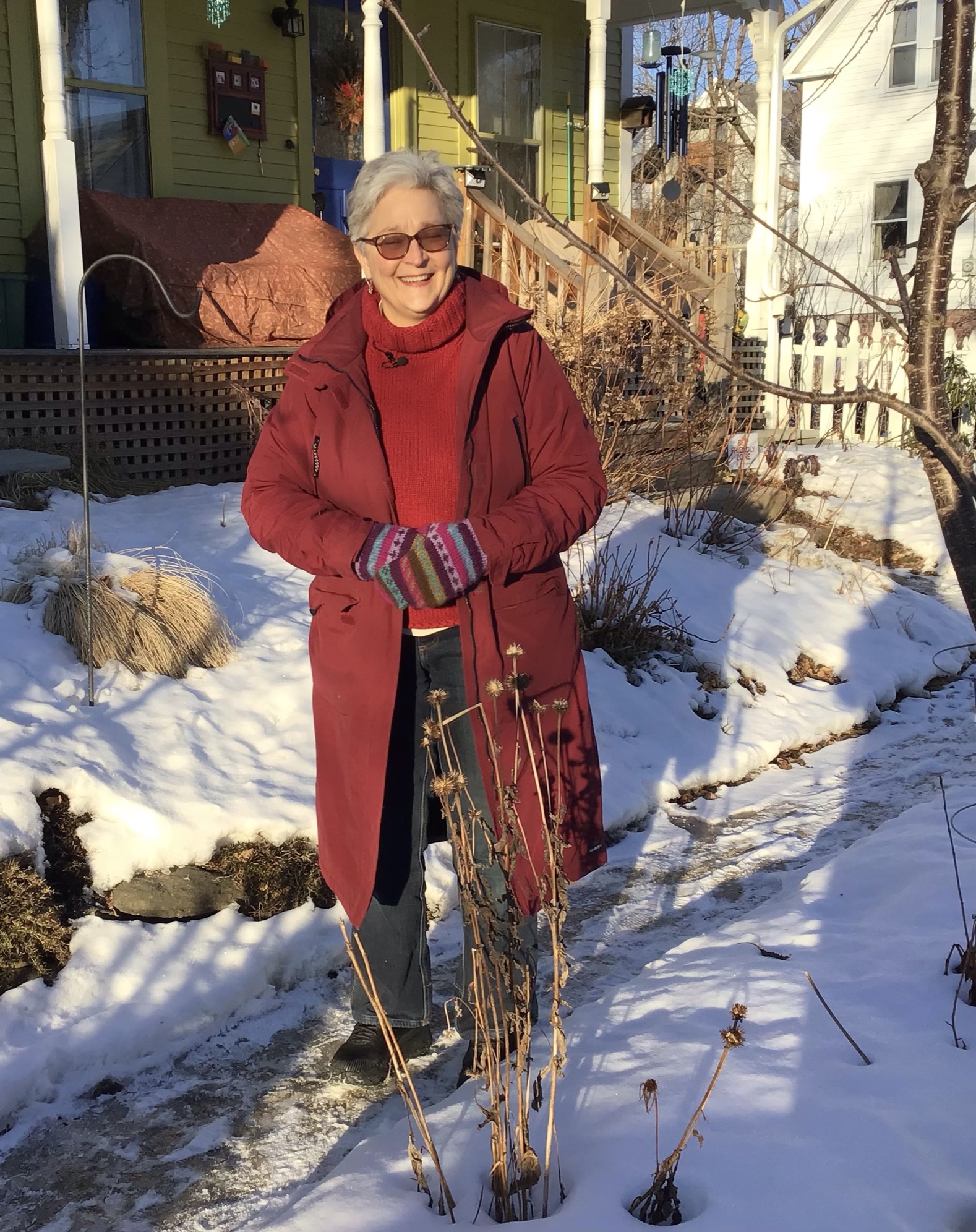2022 Winter Habitats “Do you know” -what winter landscape elements support pollinators and important insects for healthy landscapes and birds?
PERENNIAL SEED HEADS: In the Northeast, perennial seed heads provide food for overwintering Black-capped Chickadee, Dark-eyed Junco, Tufted Titmouse, Northern Cardinal and White-breasted Nuthatch. The HHH yard has Joe Pye Weed, Eutrochium purpureum, New England Aster, Symphyotrichum novae-angliae, Purple Coneflower, Echinacea purpurea, Coreopsis and Switchgrass, Panicum virgatum plants with nutritious winter seeds. These plants look like spikey bits of winter brown and grey to me, but they look like yummy treats to birds.
HOLLOW PERENNIAL STEMS & LEAF LITTER: While hollow perennial stems and the leaf litter left as mulch provide nesting and overwintering habitat for the native bees and other beneficial insects such as butterflies, wasps, moths, fireflies, ladybeetles and ground beetles. These insects are an important part of a healthy home landscape; they will pollinate HHH’s flowers and vegetables this coming spring. Butterflies and moths also provide the caterpillars that are an important and nutritious food source for baby birds. And these 12 – 18″, hollow stalks are a bit spiky to me, but home, sweet, winter home to our pollinators!
Come late spring, after the pollinators have woken up (when daytime temperatures are consistently above 50 degrees F for at least 7 consecutive days) the stalks are left in place for stem nesting bees all year. New vegetation fills in around it, masking them from our sight. What’s left of last season’s seed heads become part of the compost pile. And the cycle begins again!

